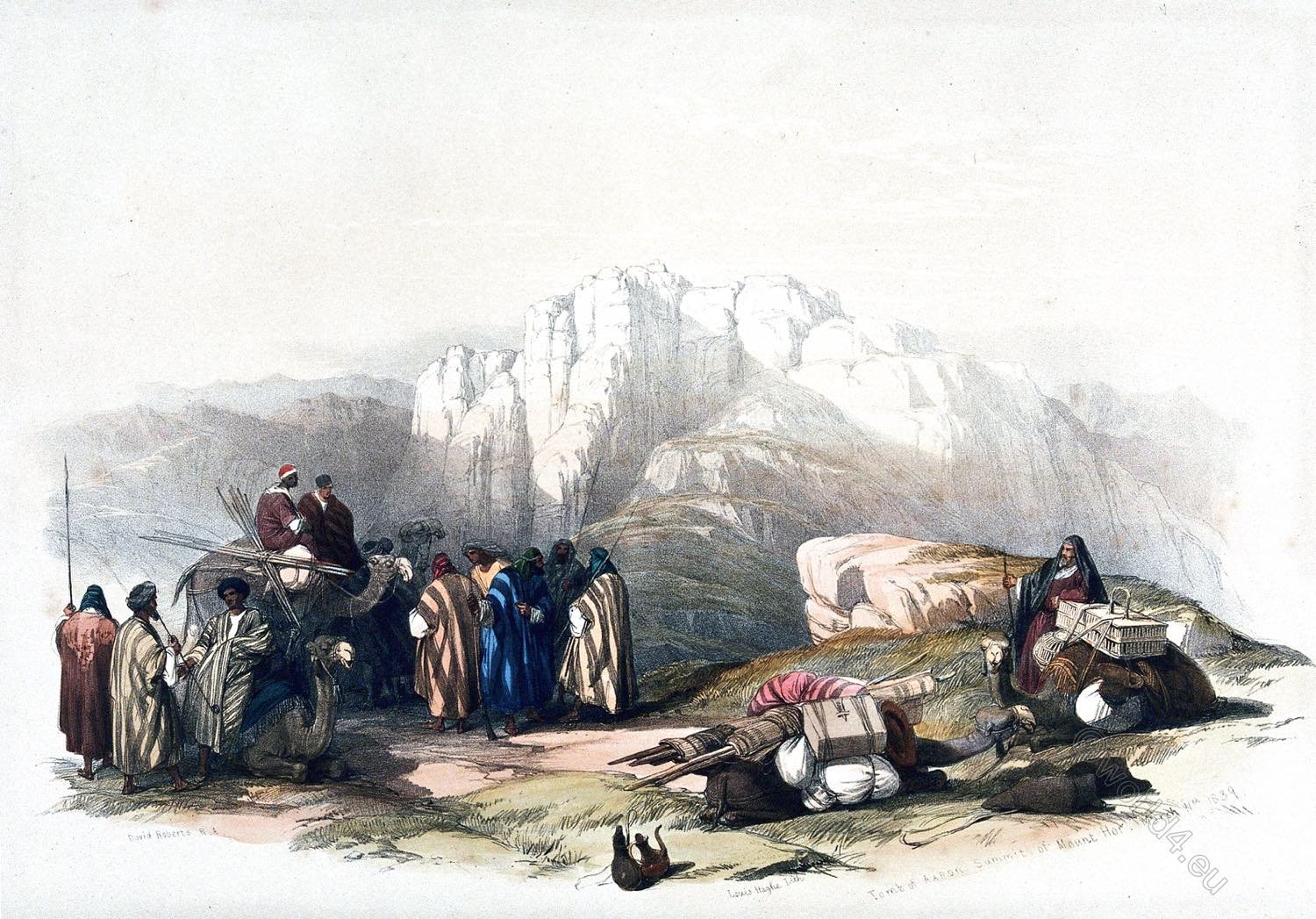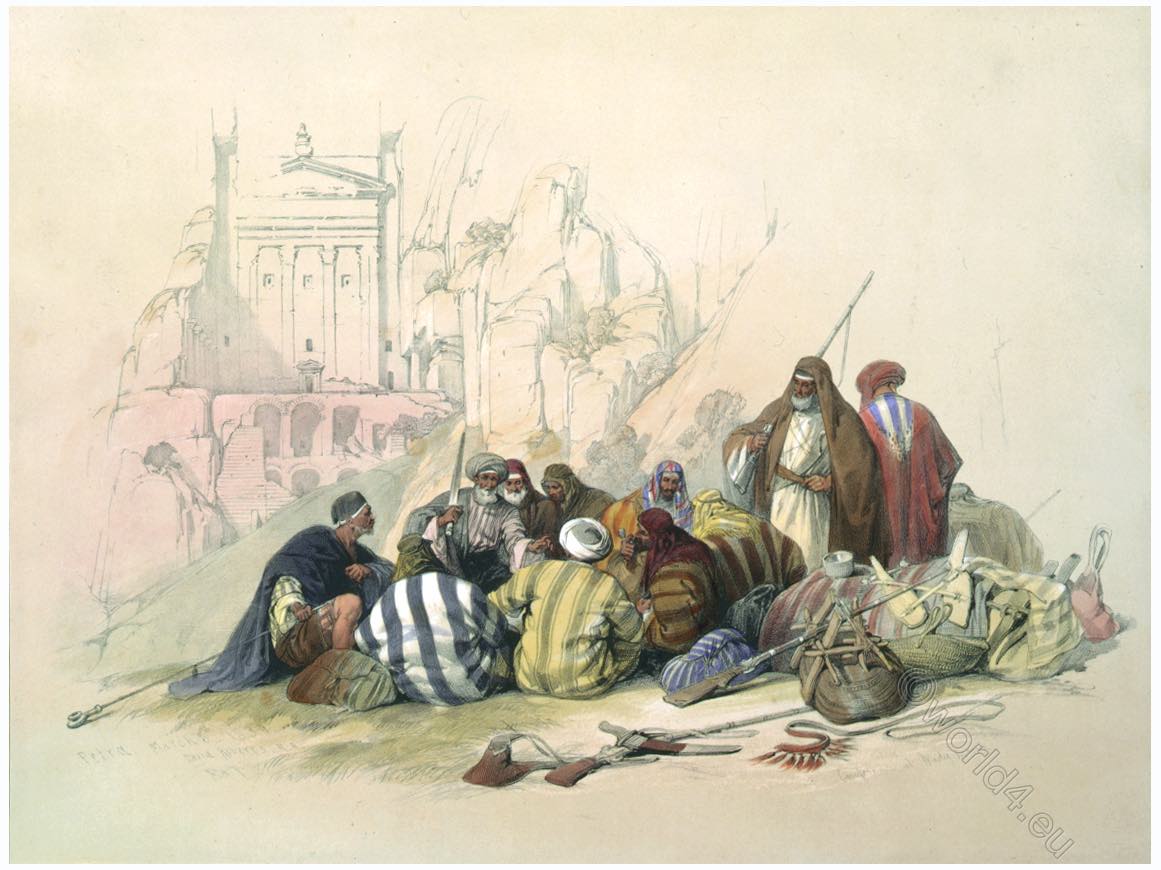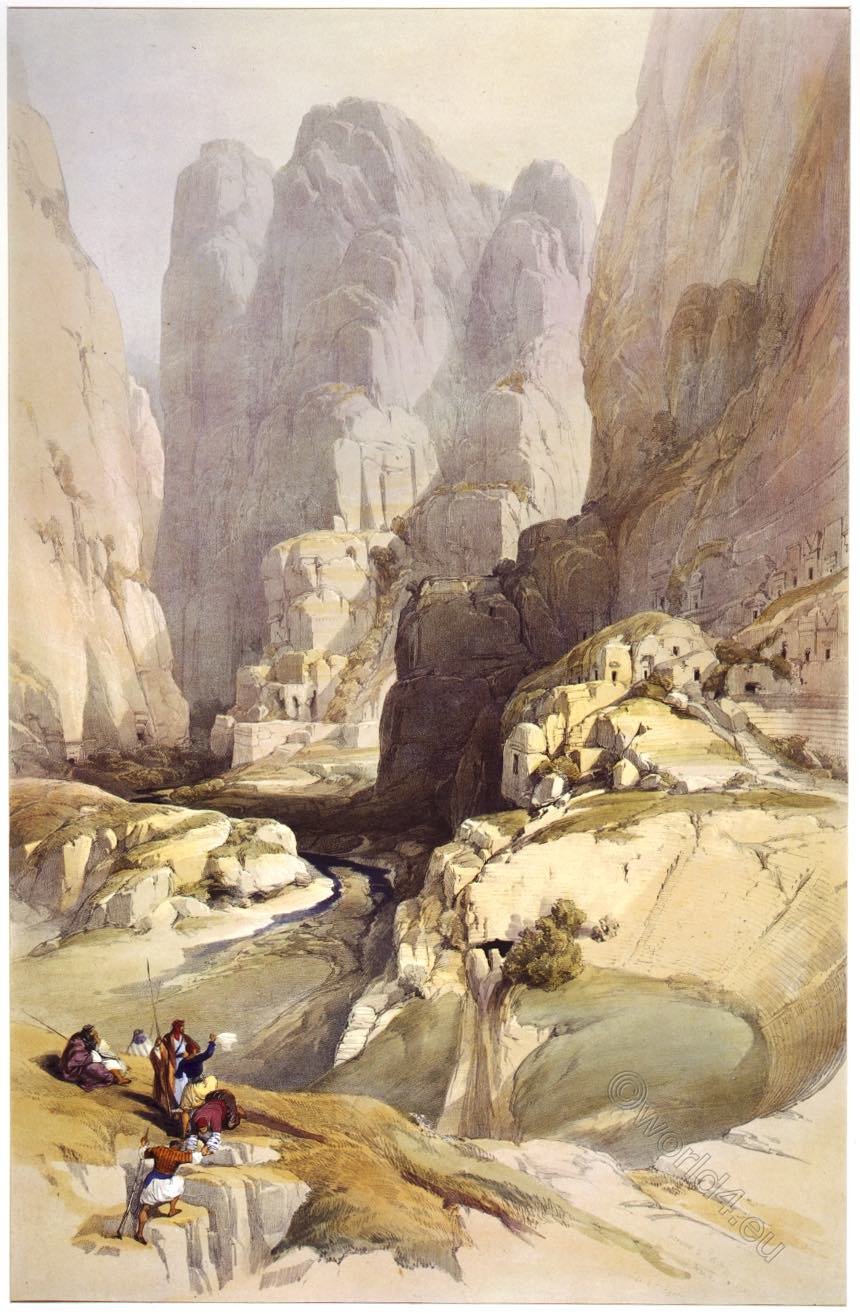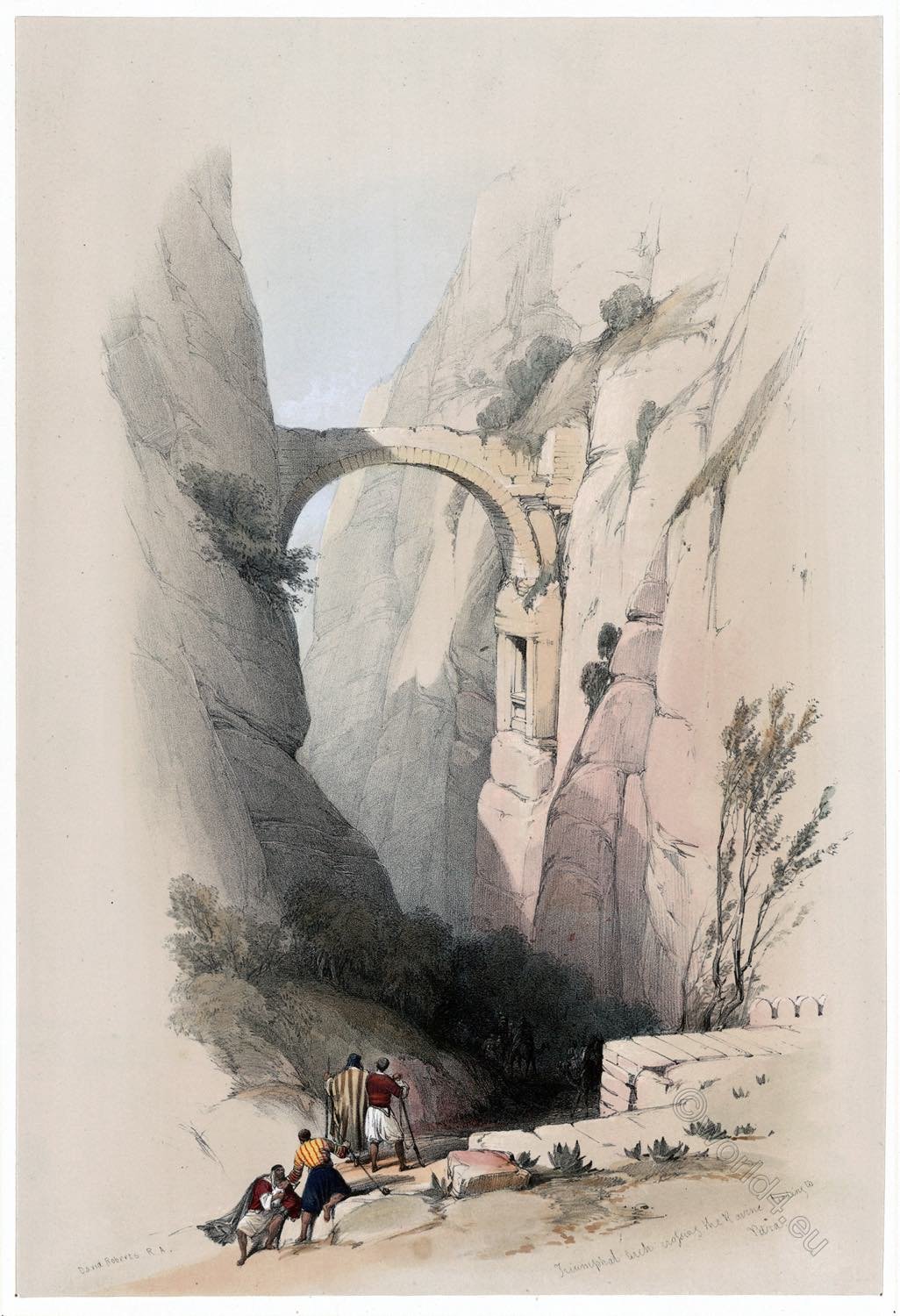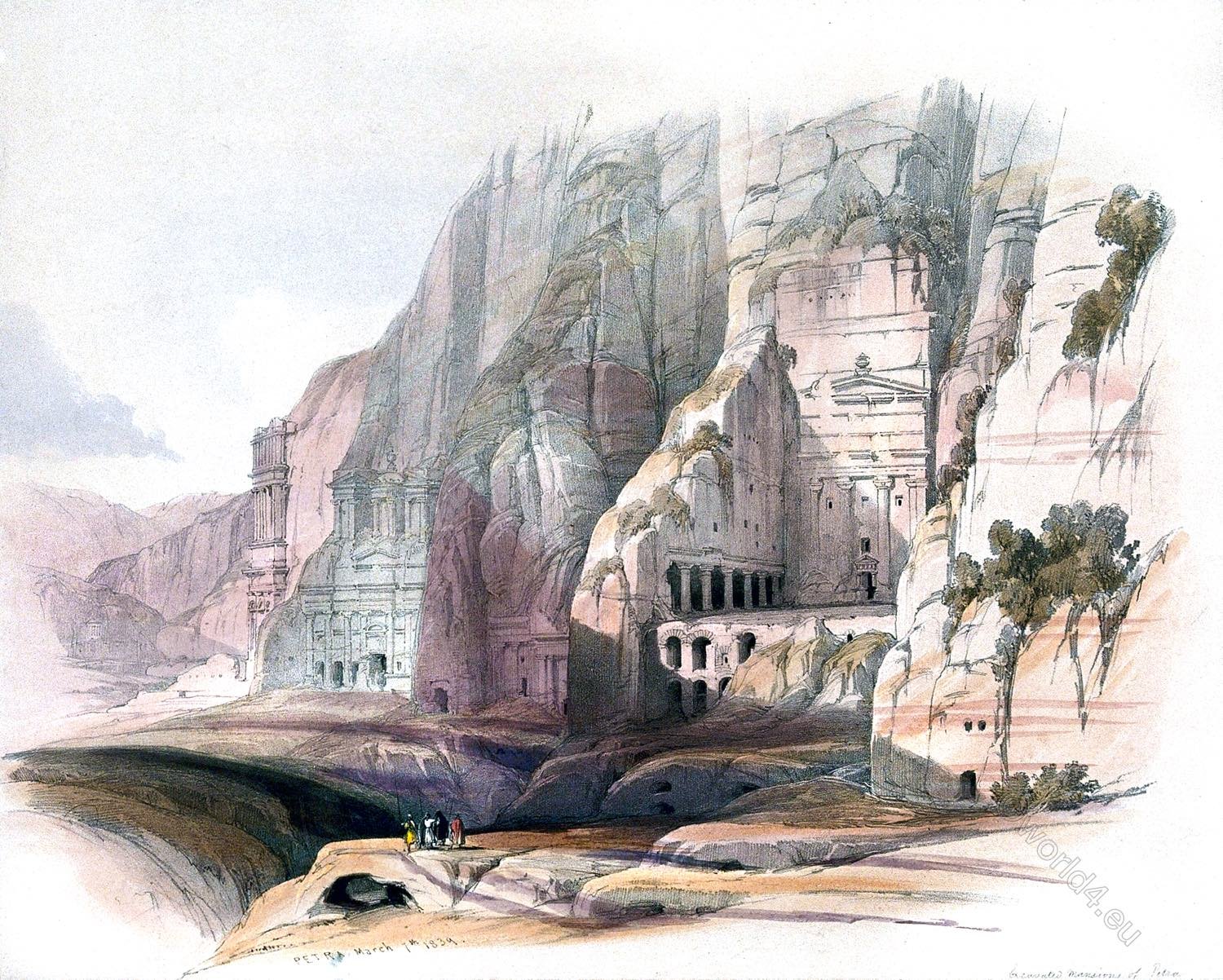
EXCAVATIONS AT THE EASTERN END OF THE VALLEY
by David Roberts.
The cliff opposite to the Theatre is largely excavated, but among those works the one given on the Vignette is of superior design and preservation. The front presents an entablature and pediment, supported by four columns, and surmounted with an urn.
The entrance is about twelve feet from the ground, and recedes considerably within the cliff, the rock extending fifteen feet forward on each side. The rock is on each side also hewn into an open gallery, supported by five pillars, two tiers of built arches supporting the ground between the colonnades, which thus forms a kind of terrace in front of the entrance. 1)
The architects of Petra had evidently a strong sense of beauty. Their choice
of position, in all their more elaborate designs, is always admirable. The view from the platform on front of those edifices, whatever might have been their purpose, must have been most captivating.
The City, in its pomp and animation below; the surrounding cliffs, in every variety of form and colour, and the whole seen through an atmosphere without a stain, and under a heaven without a cloud, must have formed a combination altogether unrivalled.
1) Roberts’s Journal.
Source: The Holy Land, Syria, Idumea, Arabia, Egypt, & Nubia, by David Roberts (British, 1796-1864), George Croly, William Brockedon. London: Lithographed, printed and published by Day & Son, lithographers to the Queen. Cate Street, Lincoln’s Inn Fields, 1855.
Discover more from World4 Costume Culture History
Subscribe to get the latest posts sent to your email.

